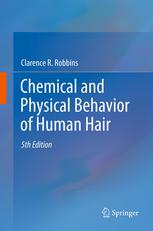

Most ebook files are in PDF format, so you can easily read them using various software such as Foxit Reader or directly on the Google Chrome browser.
Some ebook files are released by publishers in other formats such as .awz, .mobi, .epub, .fb2, etc. You may need to install specific software to read these formats on mobile/PC, such as Calibre.
Please read the tutorial at this link: https://ebookbell.com/faq
We offer FREE conversion to the popular formats you request; however, this may take some time. Therefore, right after payment, please email us, and we will try to provide the service as quickly as possible.
For some exceptional file formats or broken links (if any), please refrain from opening any disputes. Instead, email us first, and we will try to assist within a maximum of 6 hours.
EbookBell Team

0.0
0 reviewsHuman hair is the subject of a remarkably wide range of scientific investigations. Its chemical and physical properties are of importance to the cosmetics industry, forensic scientists and to biomedical researchers. The fifth edition of this book confirms its position as the definitive monograph on the subject. Previous editions were recognized as “concise and thorough” (Journal of the American Chemical Society), “an invaluable resource” (Canadian Forensic Science Society Journal), and “highly recommended” (Textile Research Journal). Chemical and Physical Behavior of Human Hair is a teaching guide and reference volume for cosmetic chemists and other scientists in the hair products industry, academic researchers studying hair and hair growth, textile scientists and forensic specialists.
Features of the Fifth Edition:
Recent advances in the classification and characterization of the different proteins and genes in IF and keratin associated proteins in human hair are described.
The mechanism and incidence of hair growth and loss and hair density vs. age of males & females are described for Asians, Caucasians and Africans in different scalp regions.
Details of hair surface lipids and cuticle membranes provide a better understanding of the surface and organization of the CMC and its involvement in stress strain is presented.
Recent evidence demonstrates a more bilateral structure in curly hair and a more concentric arrangement of different cortical proteins in straighter hair.
SNPs involved in hair form (curl and coarseness) and pigmentation and genes in alopecia and hair abnormalities are described.
The latest biosynthetic scheme for hair pigments and structures for these and the different response of red versus brown-black pigments to photodegradation is described.
A new method for curvature on 2,400 persons from different countries and groups is used to assign curvature throughout this book.
Additional data for age and effects on diameter, ellipticity, elastic modulus, break stress and other parameters are presented with much larger data sets featuring statistical analyses.
Hair conditioning, strength, breakage, split ends, flyaway, shine, combing ease, body, style retention, manageability and feel parameters are defined and described.
A new section of different life stages by age groups considering collective and individual changes in hair fiber properties with age and how these affect assembly properties.